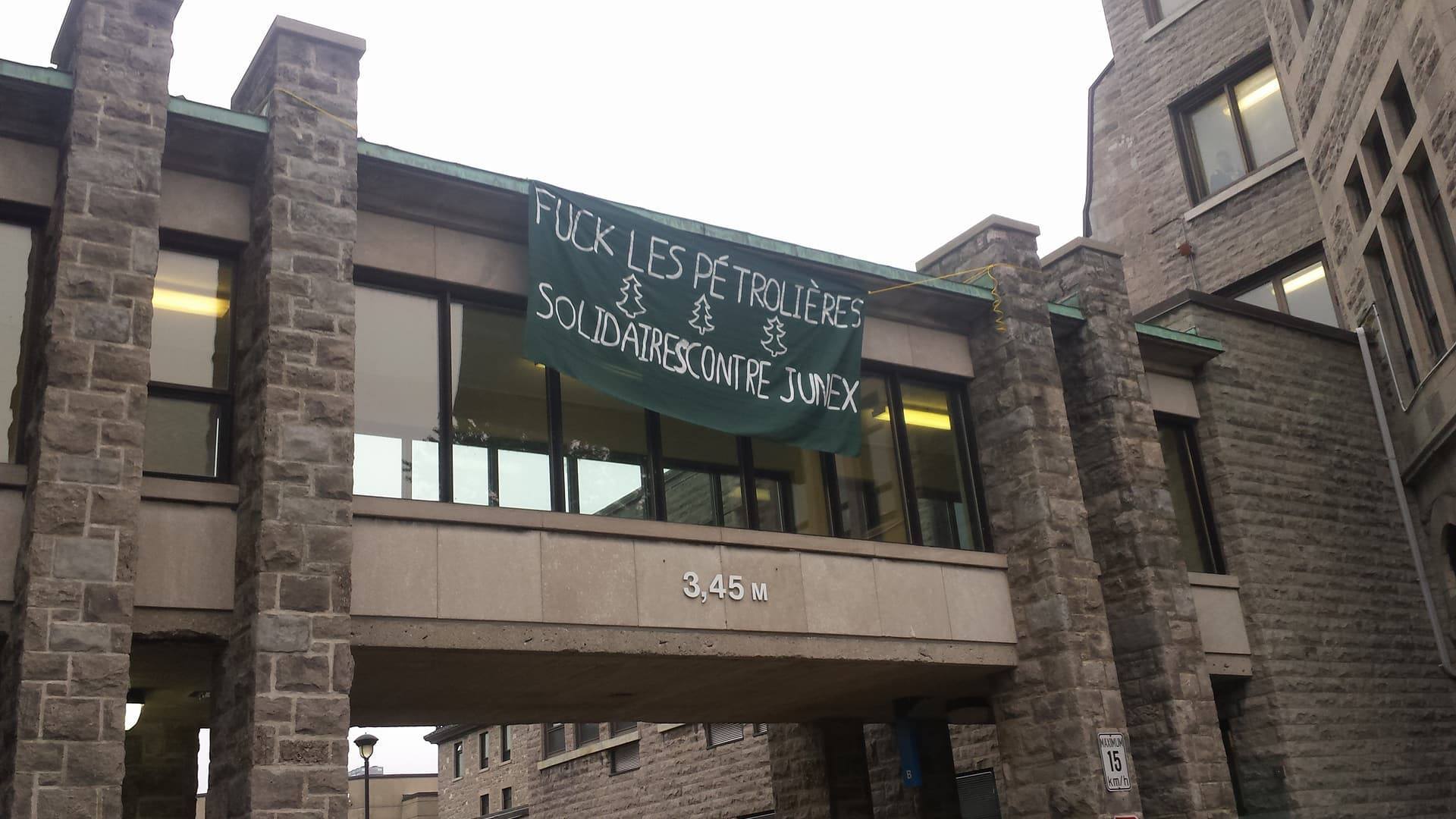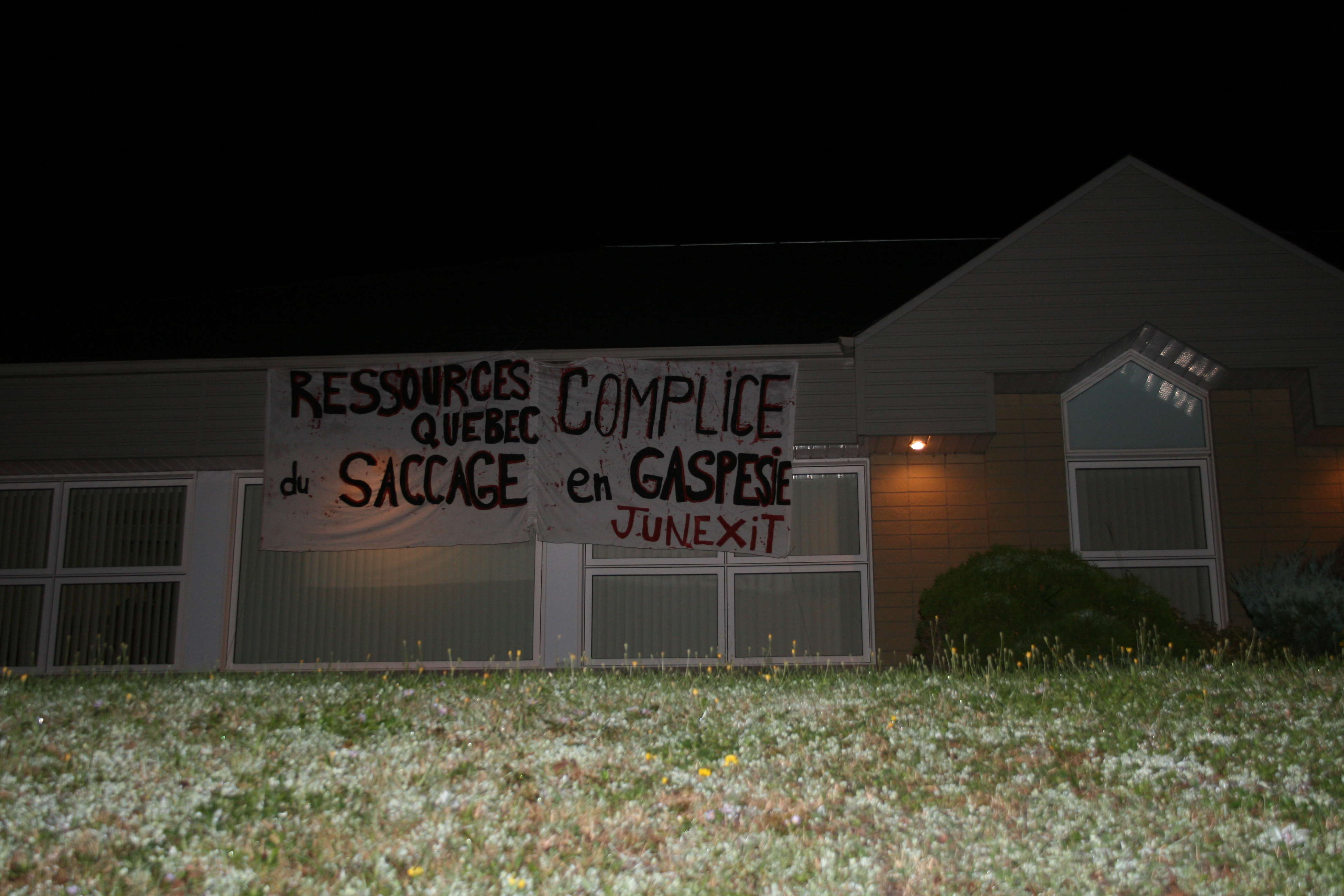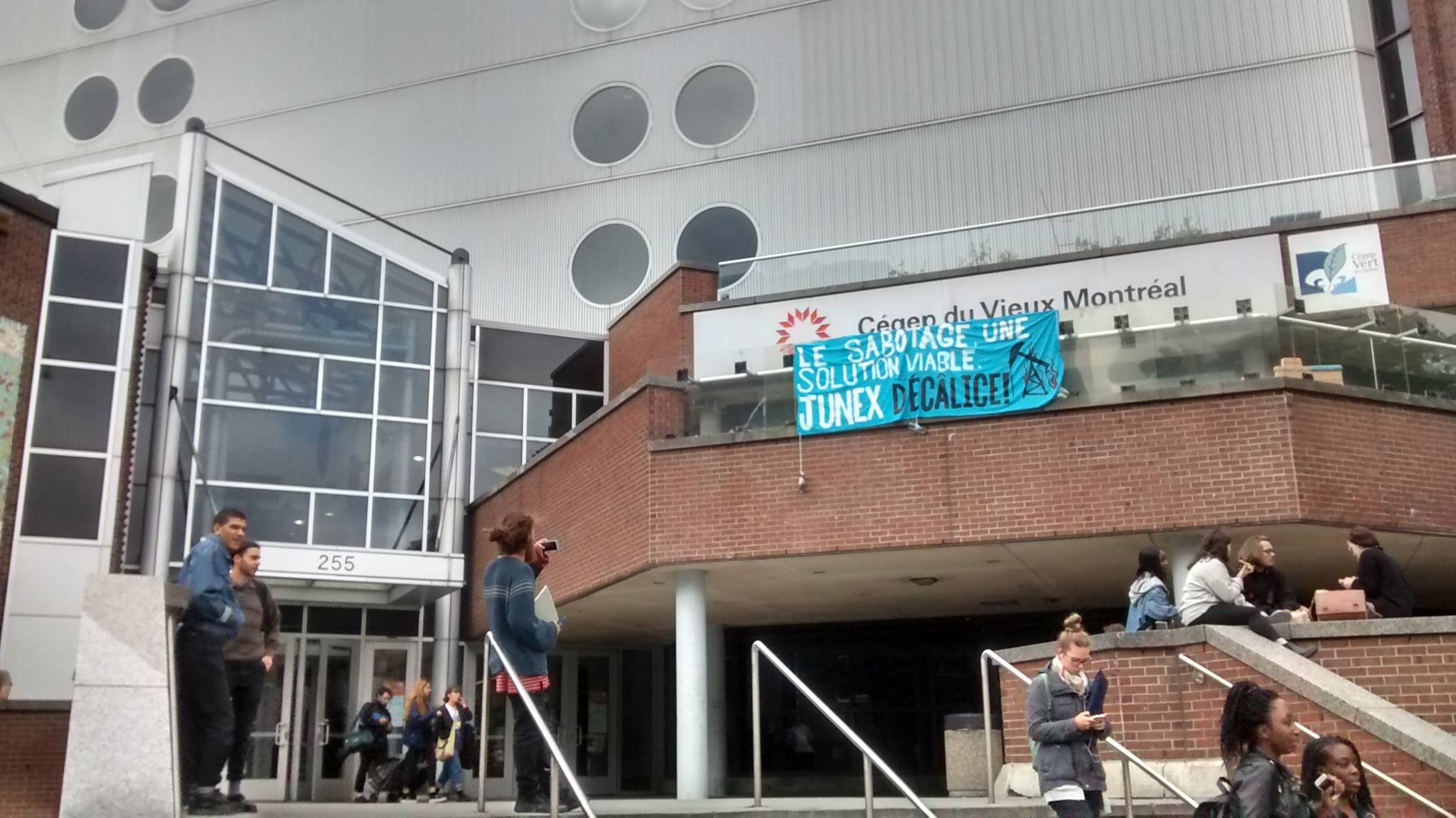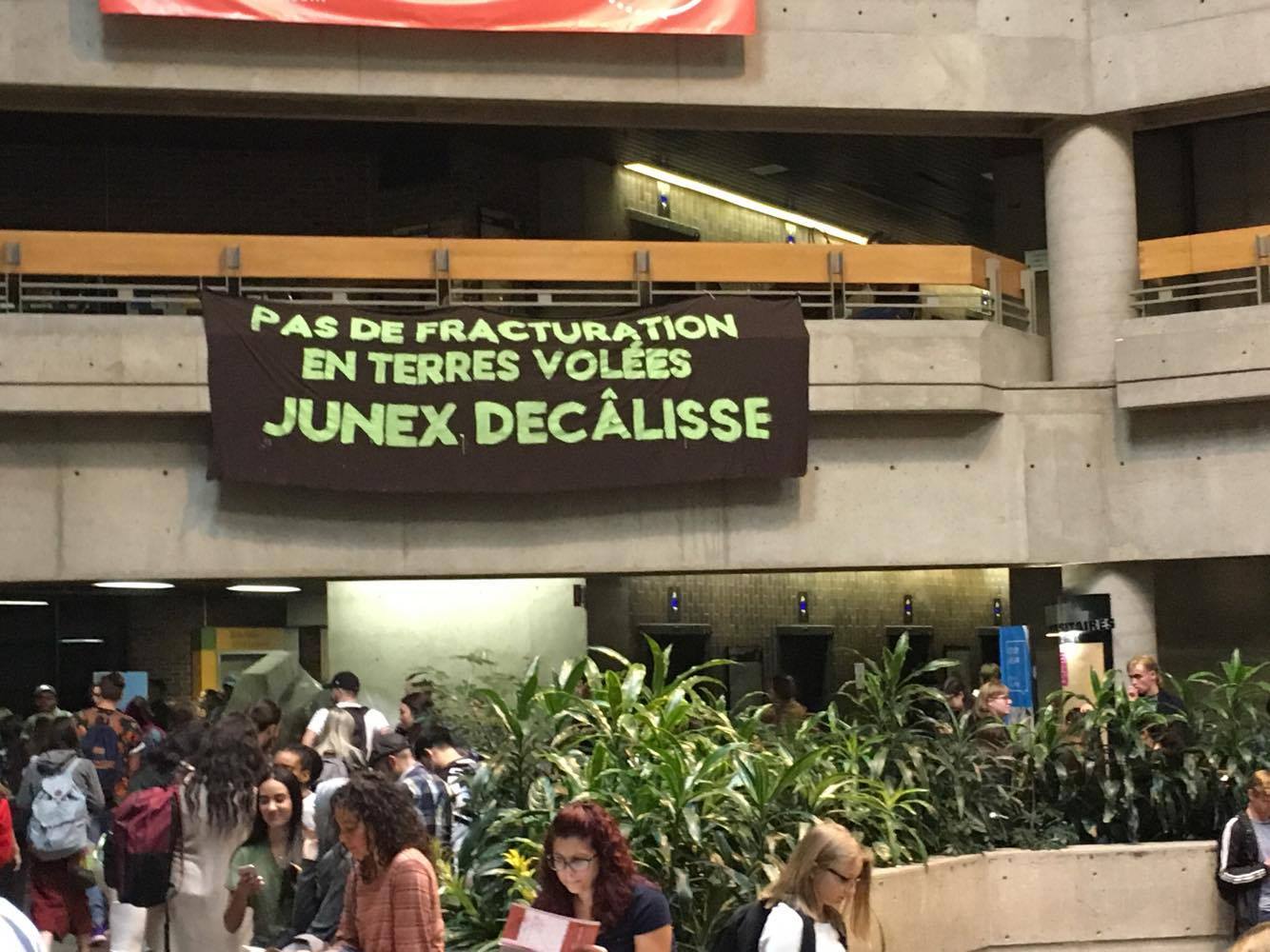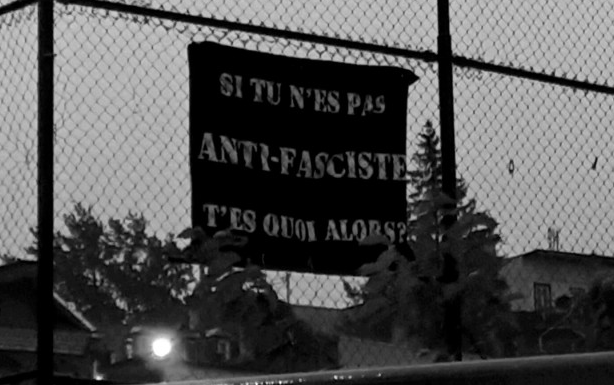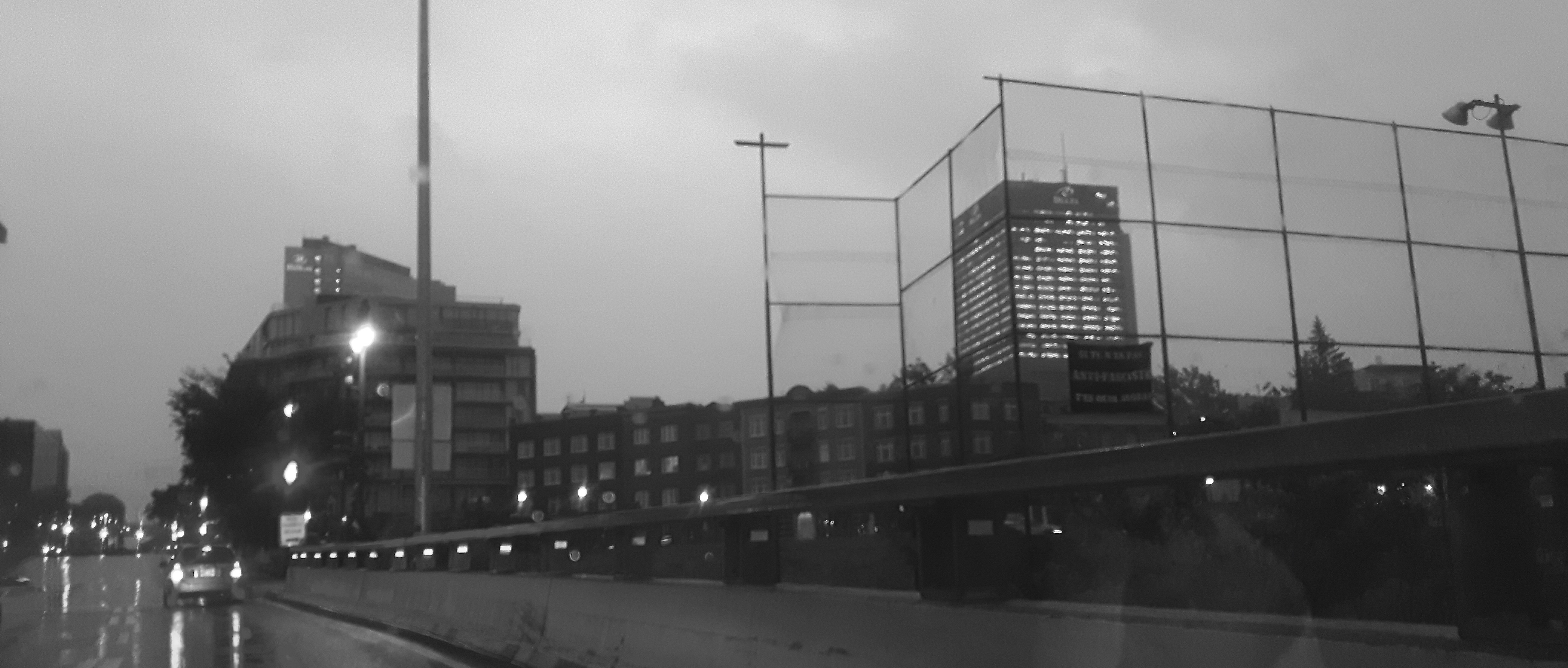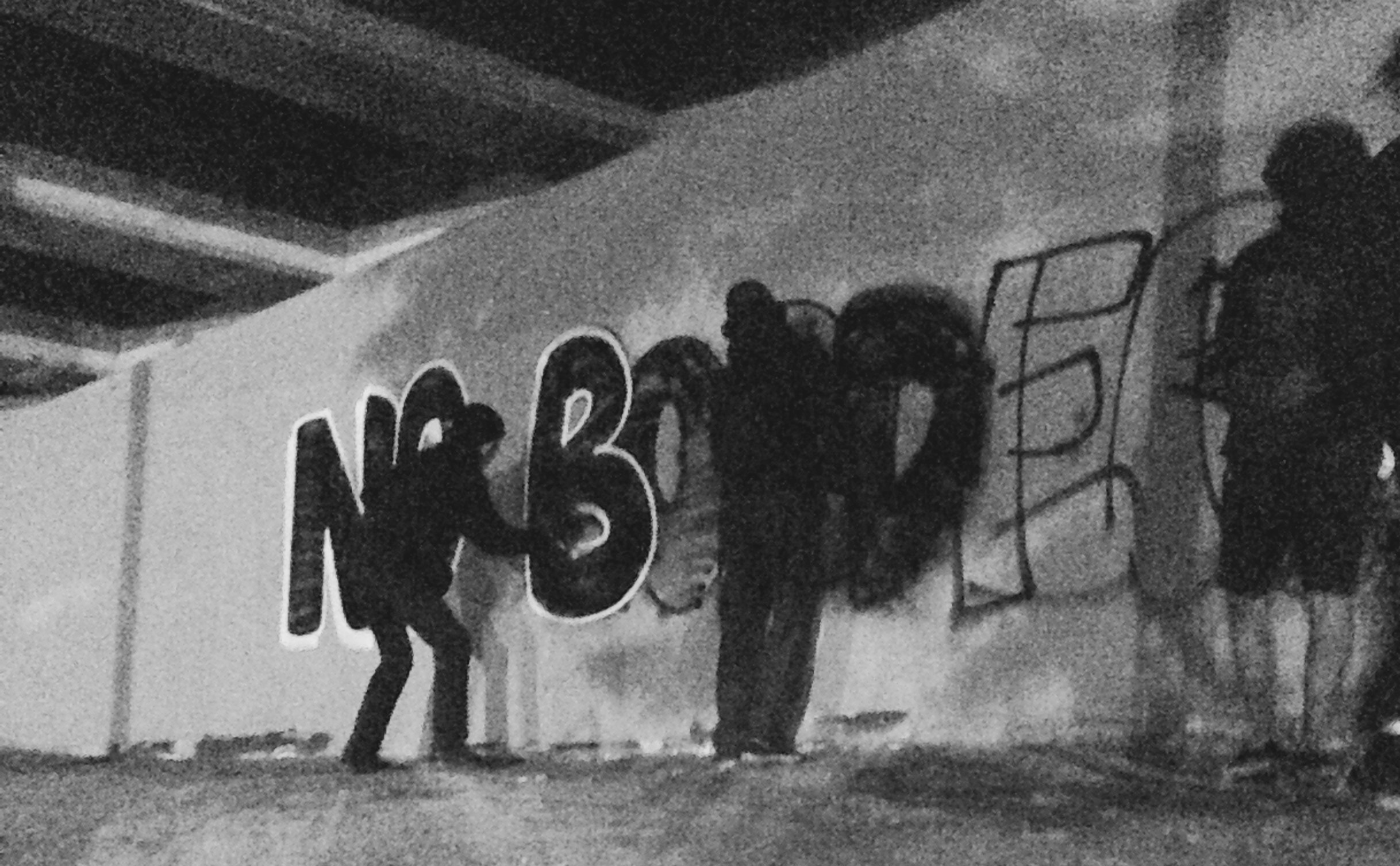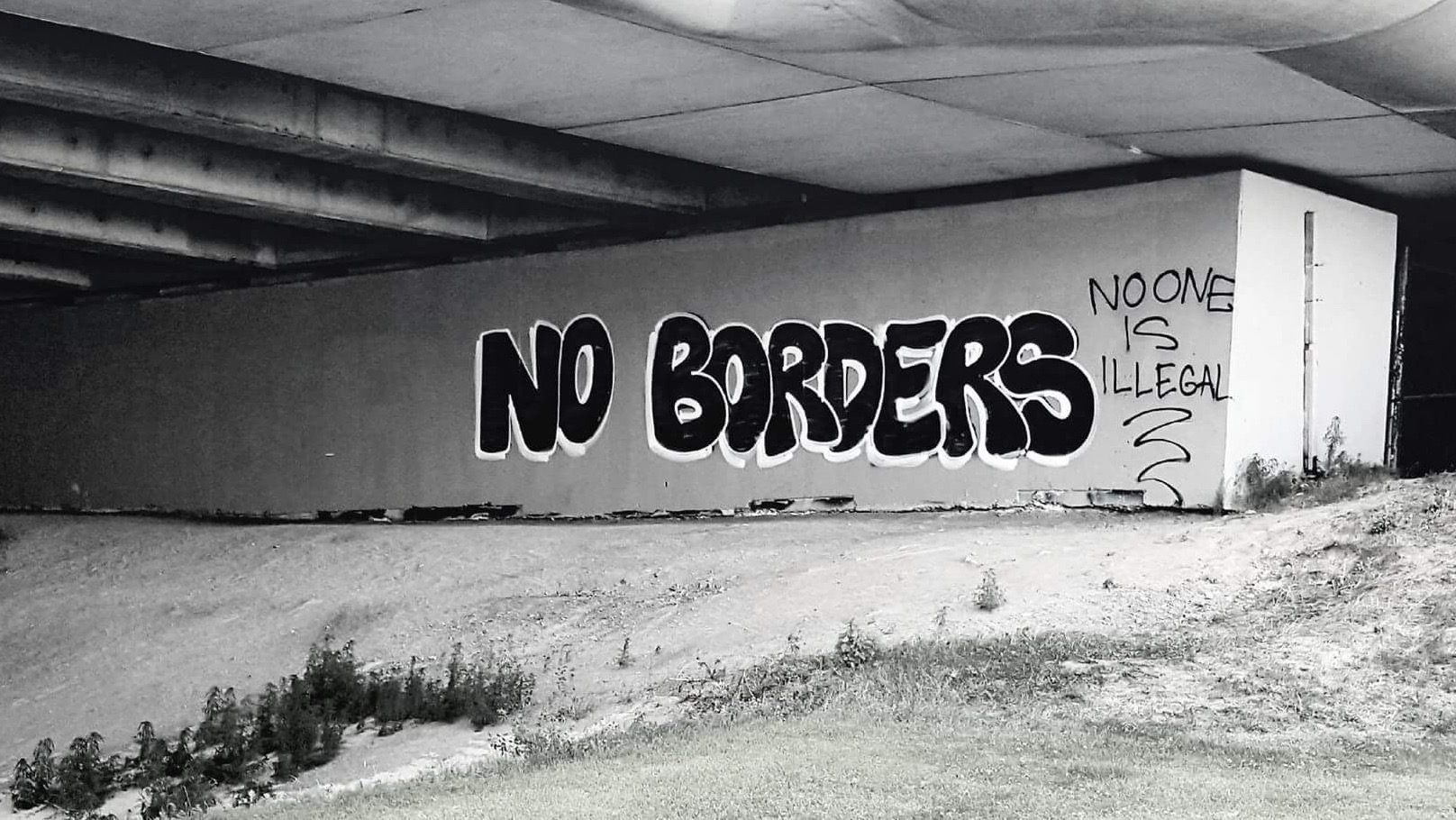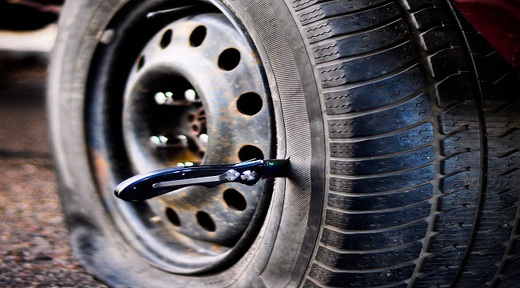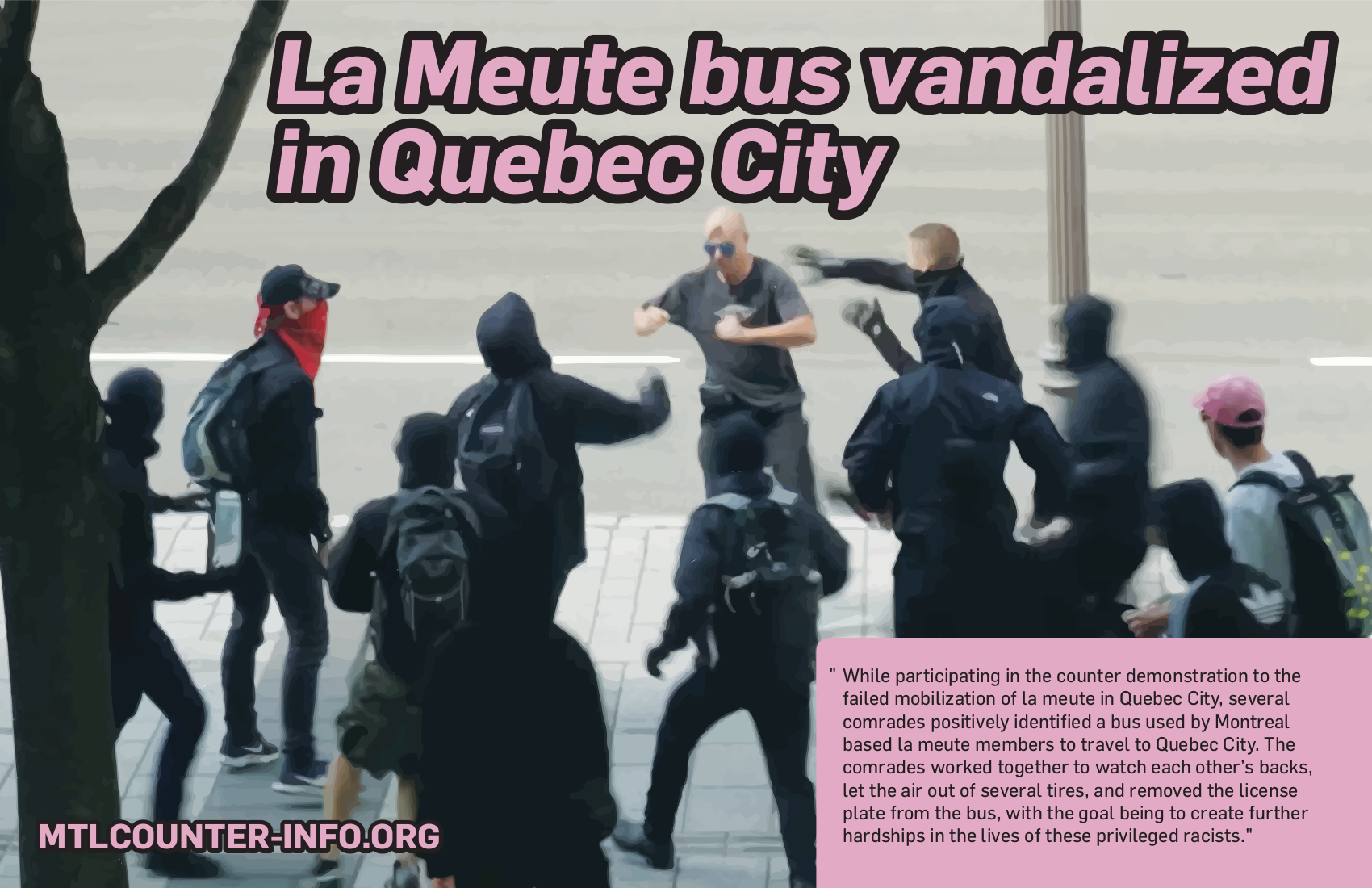In the week of action in solidarity with the River Camp, a banner was dropped on the walkway of Cégep St-Laurent, reading “Fuck oil companies, solidarity against Junex”. Several students distributed fliers announcing a demonstration in solidarity with the River Camp. Due to positions and mandates against hydrocarbons, the AECSL (Student association of Cégep de Saint-Laurent) supports all initiatives that aim to struggle against oil companies. Solidarity!
Banner drop at the Resources ministery in Caplan, Gaspesie!!
Anonymous submission to MTL Counter-info
Last night, after we climbed like ninjas on top of ministery buildings (with a view of the magnificent Baie-des chaleurs), we hung a banner on the MERN offices (ministery of energy and resources):
Fuck that Resources Quebec that invests loads of cash in oil companies, and fuck that Resources Quebec, and fuck that Quebec! Yooouhouuuu Junex, petrolia, IT’S OVER!
Arson of two luxury cars in St-Henri
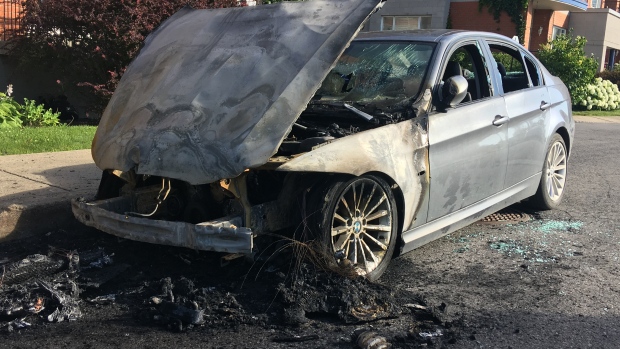
Anonymous submission to MTL Counter-info
Inspired by the riots in Hamburg, we burned two luxury cars outside of a condo in St-Henri during the night of July 13. In a neighbourhood where people have to choose between food and rent, don’t be surprised when we set fire to your flagrant displays of class privilege.
We used a simple method: fire sticks half-covered in fire-paste. All the material can be found in a camping store. We lit the fire-paste covered end and placed it in the top corners of the car’s grill, between the headlights. We used two sticks per car. The fire is mostly invisible until plastic or motor oil catches fire, giving you time to leave unseen. Be careful: the fire can easily spread to cars parked close-by.
The police who violently enforce gentrification had these encouraging words to say:
“[Montreal police Cmdr. Sylvain Parent] said police have increased their visibility in the neighbourhood in response to the attacks, but it’s hard to stop people who want to commit crimes. “If there’s someone who wants to do something and they see a police officer pass, they’ll wait until we pass by,” he said. “If they really want to do something, they’ll do it anyway.”
Until next time,
Black Masked Winners (BMW) / Anarchistes Uni.es Dans l’Insurrection (AUDI)
Banner drop: fuck off Junex
Banner drop: fuck off Junex
A banner drop and flyering at UQAM to kick off the week of action! We’re told that one of the militants encountered a family member of Lavoie, the family of the president and vice-president of Junex. We’re delighted to know that the message will be sent to them directly.
It wasn’t just McGregor who got beat last Saturday
Anonymous submission to MTL Counter-info
Last week, a new racist group tried to publicly organize for the first time. Their name is Wolves of Odin[1. Editor’s note: From the Wolves of Odin facebook page – “FOUNDED IN THE WINTER OF 2016, WE ARE AN ORGANIZATION DEDICATED TO THE DEFENSE OF OUR CITIZENS AND WAY OF LIFE. ORIGINALLY ESTABLISHED AS A LOCAL GROUP OF CONCERNED CITIZENS HERE IN MONTREAL, OUR MEMBERSHIP HAS GROWN INTERNATIONALLY, WITH REQUESTS FOR SATELLITE GROUPS OUTSIDE CANADA. THE W.O.O. WAS ORIGINALLY FOUNDED IN RESPONSE TO THE GROWING IMMIGRATION CRISIS THAT IS BURNING OUT OF CONTROL IN MANY PARTS OF EUROPE. WE HERE AT W.O.O. UNDERSTAND THAT IN THE BEGINNING, IT WAS SEEN AS A NECESSITY TO AID OUR FELLOW HUMAN BEINGS THAT HAVE FLED THEIR WAR TORN COUNTRIES. MANY WERE WELCOMED AND PROVIDED FOR, YET MANY HAVE FORCED THEIR WAY IN UNDER THE GUISE OF REFUGEE STATUS, AND MANY MORE HAVE OVERWELMED THE UNDERSTAFFED BORDER CROSSINGS IN MANY COUNTRIES. CRIME RATES HAVE SKYROCKETED UNDER WAVES OF FOREIGN IMMIGRATION, AND THE FACE OF EUROPE HAS BEEN TRANSFORMED FOREVER. IN MANY PLACES OF EUROPE, IT HAS BECOME EXTREMELY UNSAFE FOR THE LOCAL, ORIGINAL INHABITANTS. REPORTS OF THEFTS, ASSAULTS, VANDALISM, RAPE, AND CHILD ABUSE, HAVE BEEN ACREDITED TO IMMIGRATION, IN WHAT WERE ONCE PEACEFUL COMMUNITIES, ATTEMPTING TO DO THEIR PART TO ALEVIATE HUMAN SUFFERING. WE REMAIN STEADFAST IN OUR BELIEF THAT THERE ARE MANY LEGITIMATE REFUGEES FLEEING THE ATROCITIES THAT THEY HAVE FACED IN THEIR OWN COUNTRIES, YET WITH THESE LEGITIMATE REFUGEES, COME MANY THAT WISH TO IMPOSE THEIR LAWS AND IDEOLOGY UPON US AS CANADIANS, AND OTHER CITIZENS OF GREAT COUNTRIES FROM AROUND THE WORLD. WE HAVE OUR OWN LAWS AND SOCIETIES. WE ARE PROUD OF OUR OWN RICH AND NOBLE HISTORIES. OUR ANCESTORS FOUGHT FOR OUR WAY OF LIFE, AND MANY GAVE THEIR LIVES SO THAT WE MAY LIVE FREE, SO THAT OUR FAMILIES AND FUTURE GENERATIONS MAY LIVE FREE. BY REFUSING TO YIELD, WE ARE ANSWERING THE CALL TO HELP KEEP THE LIGHT OF THE WEST BURNING BRIGHTLY. WE ARE THE WOLVES OF ODIN, AND WE WILL HOLD THE LINE”], not to be confused with Soldiers of Odin. They organized a small BBQ in a park in the west of the city. After eating and drinking, they decided to go watch the highly-anticipated boxing match.
Anti-fascists recognized them and came in large numbers to confront them. They then came outside to try to explain how they aren’t racist. Within five seconds, a beer bottle was shattered on one of their heads, and the others were taken care of. One of them ended up being stomped on the ground. Let’s say that they were bruised and bloodied, with three of them seriously hospitalized.
Even though these groups are still small, we want to completely prevent them from growing quickly. We await each of their initiatives with a capacity to strike.
Watch your backs fascists.
Quebec City: If you’re not anti-fascist, what are you then?
Anonymous submission to MTL Counter-info
Québec City, September 5, 2017 — Earlier today a group of anti-racist/anti-fascist organizers dropped a series of banners. This action is a part of an ongoing and decentralized struggle against Québec right-wing extremists and white nationalists promoting xenophobic, anti-immigrant and racist views. The banners, displayed prominently along major arteries during the morning commute, read “Si tu n’es pas anti-fasciste, t’es quoi alors?” (Translation: “If you’re not anti-fascist, what are you then?”)
Anti-fascism is anti-racist action.
We denounce the practices of scapegoating and fear-mongering that targets Muslims and other racialized immigrant groups. Such practices both implicitly and explicitly blame these groups for the consequences of neoliberal capitalism.
We also denounce the state detention of Haitian and other migrants for fleeing across arbitrary borders without the approval from the colonial state as well as the recent, highly-mediatized campaign against a man of colour for his political activism.
This is not a time for debate or false equivalencies. Far-right groups are growing in visibility and influence in Quebec – they promote and defend white supremacy and ongoing colonialism, often with the tacit support of the police. White nationalists have drawn the lines of engagement, demonstrating hatred and contempt for immigrants, people of colour, Indigenous peoples, people of non-Christian faiths and backgrounds, and anyone else who disagrees with their political vision. In this context, there is no principled neutral position. We call on people everywhere to join us in taking anti-fascist action.
No Borders: No One Is Illegal
Anonymous submission to MTL Counter-info
This past weekend, a group of Montreal anti-racist organizers and graf writers collaborated in an effort to remind people living in Montreal and throughout Québec that no one is illegal: there is no such thing as illegal migration. The piece went up underneath the rue Sherbrooke overpass between the Stade Olympic and Parc Maisonneuve.
Montréal is on unceded Kanien’kehà:ka territory that has also long served as a gathering place for many First Nations. The Canadian nation-state was founded and continues to rely on the ongoing dispossession and displacement of Indigenous peoples from their territories, cultures, and languages. Borders are an illegitimate, state-imposed apparatus that serve to divide and displace people and communities and then make such divisions appear natural.
Borders promote settler nationalism, reinforce state power and control, and protect the economic and political interests of the capitalist elite. There can be no rightful Canadians within geographic borders established through theft and genocide.
There. Can. Be. No. Justice. On. Stolen. Land.
Anger into Action: Anti-gentrification attacks this summer in Hamilton
The buzz has become impossible to escape. Business associations speak of “renewal”, while expensive restaurants celebrate “revitalization” and local politicians promote “redevelopment” as the city gives large grants to Toronto entrepreneurs to set up shop in town. This is all accompanied by a media blitz presenting Hamilton as a land of opportunity for the rich. With every passing day the meaning of these words becomes painfully obvious – in practice they really just mean increased misery, hardship, and displacement. Real estate agents, property management firms, investors, and business owners amongst others, reap huge profits as many of us who have called Hamilton home struggle to get by in the changing city. This is a fundamental reality of capitalism and is not surprising. What is surprising, is that those who celebrate and profit off gentrification continue to do so openly without regularly feeling the anger of those who their narrow self-interest harms.
This summer, we took a few small actions to remind the profiteers and boosters of gentrification that their presence in our neighbourhoods is unwelcome. Between June and August 2017, we carried out a series of simple attacks against businesses and entities that seek that seek to attract rich people and investors, encouraging the kinds of rapid rent increases that have already displaced thousands of people.
With these actions, we remind ourselves that we’re not powerless and that those who profit off our worsening living conditions, even with all their access and power, are still within reach. We don’t pretend these attacks will stop gentrification in themselves, but we can at least refuse to greet these profiteers with smiles and break the illusion that what’s good for investors is good for all of us. These attacks are easy to do and the list below is just a few that we can claim, but every day we walk around the city and see manifestations of hostility towards both the established local rich and the vultures who have recently descended. It makes us happy to know other people we’ve never met feel the way we do and by sharing this account we hope to encourage others to turn their anger into offensive action.
Windows were broken at The Butcher and the Vegan and at The Heather, two restaurants on Barton seeking to attract a rich clientele to one of the city’s poorest neighbourhoods. Where so many of us are on social assistance getting $600 a month, it’s an insult that the creep at The Heather gets tens of thousands of dollars from the city to sell a single meal for $70. We don’t care how artisanal your butter is.
The locks were glued and the facades vandalized with paint at the offices of Co-Motion, the branch of Marsales Realty in Westdale, and of the Acclamation condo development on James St. The latter two feel self-explanatory, but Co-Motion deserves a bit more attention. Founded by a prominent local capitalist and slumlord, Co-Motion seeks to attract entrepreneurs and investors to participate in the current redevelopment feeding frenzy. They mask their greed with talk of community and creativity, but their purpose is to recruit for and intensify the processes of gentrification in the city.
The security cameras on Hendry’s shoes on Barton St. were vandalized and tags reading “no handouts for yuppies” were left on the windows. The people who are redeveloping that building with funding from the city brag to their potential clients about how the neighbourhood is up-and-coming and gentrifying. This is essentially saying that there are poor people there now, but don’t worry, they’ll be gone soon and opportunities to make money abound. A large tag reading “Condos are War, Defend the Block” was also left on the front of the former Gibson school on Barton. The people in the neighbourhood fought to keep their school open only to now see it turned into condos that few could ever dream of affording.
It’s easy to attack when you give yourself the means. There’s still a month of summer ahead and no shortage of deserving targets.
And solidarity to those in Montreal who have been developing a practice of attack against gentrifiers over the past few years!
La Meute bus vandalized in Quebec City
Anonymous submission to MTL Counter-info
While participating in the counter demonstration to the failed mobilization of la meute in Quebec City, several comrades positively identified a bus used by Montreal based la meute members to travel to Quebec City. The comrades worked together to watch each other’s backs, let the air out of several tires, and removed the license plate from the bus, with the goal being to create further hardships in the lives of these privileged racists.



